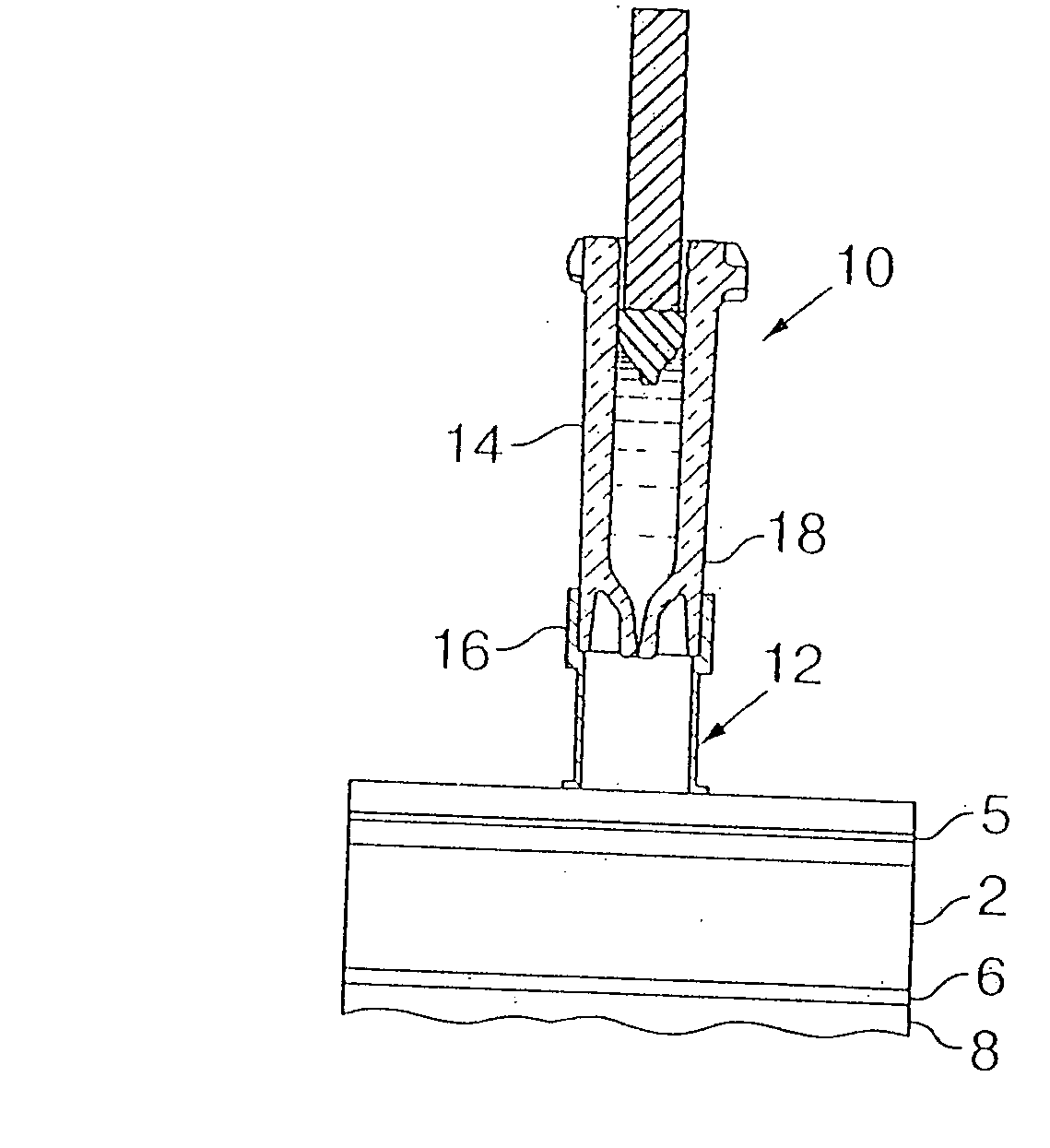Intradermal injection system for injecting DNA-based injectables into humans
a technology of intradermal injection and human body, which is applied in the direction of intravenous devices, tissue/virus culture apparatus, biochemistry apparatus and processes, etc., can solve the problems of reducing the effect of transfection, reducing the difficulty of proper injection of id using a conventional needle and ampule injection system, and reducing the difficulty of patient discomfort and frustration for clinicians
- Summary
- Abstract
- Description
- Claims
- Application Information
AI Technical Summary
Problems solved by technology
Method used
Image
Examples
Embodiment Construction
[0018] The needle-free injection system described herein can effectively administer ID injectables with the same volume range of injectables as the needle and ampule system without any significant user skill or training. To increase the efficiency of ID injections, an ID adapter was developed that attaches to the distal end of the ampule of the preferred embodiment of the present invention: the needle-free injection system described in U.S. Pat. No. 5,399,163 or that described in pending U.S. application Ser. No. 08 / 858,249, both of which are incorporated herein by reference. For either system, the actual injection site on the body can be in many different locations (e.g. the medial side of the forearm or around the knee).
[0019] In the preferred embodiment of the present invention, an intradermal adapter, shown at 12, is coupled to the needle-free injection system described in U.S. Pat. No. 5,399,163 or that described in pending U.S. Application Serial. No. 08 / 858,249, the ampule p...
PUM
 Login to View More
Login to View More Abstract
Description
Claims
Application Information
 Login to View More
Login to View More - R&D
- Intellectual Property
- Life Sciences
- Materials
- Tech Scout
- Unparalleled Data Quality
- Higher Quality Content
- 60% Fewer Hallucinations
Browse by: Latest US Patents, China's latest patents, Technical Efficacy Thesaurus, Application Domain, Technology Topic, Popular Technical Reports.
© 2025 PatSnap. All rights reserved.Legal|Privacy policy|Modern Slavery Act Transparency Statement|Sitemap|About US| Contact US: help@patsnap.com



